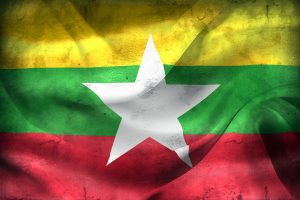Myanmar’s military junta has confirmed its plans to hold an election in December, as the country struggles to come to grips with the significant damage from last month’s powerful earthquake.
In a notice published in the state-run Global New Light of Myanmar yesterday, the Union Election Commission (UEC) reaffirmed its previously announced plan to hold the poll in December and said that “individuals or groups intending to apply for permission to establish a political party must submit their applications no later than 9 May 2025.”
The election body also appointed commissioner Than Soe as its vice-chair, in a move it said was aimed “to ensure the duties of the Union Election Commission are carried out more effectively and to provide greater support to the Chairman of the Commission.” The Irrawaddy described the appointment of a UEC vice-chair as “unprecedented.”
Since seizing power from the National League for Democracy (NLD)-led government in February 2021, Min Aung Hlaing has gambled that an election, by initiating a transition from open military rule to a more veiled, civilianized form of control, will help catalyze an end to the current conflict and allow the government to regain international legitimacy.
But the junta has no intention of allowing an unfettered electoral process. In 2023, the SAC dissolved 40 political parties, including the NLD, which won both the 2015 and 2020 elections in a landslide. State media reported on Tuesday that 71 political parties have now registered or re-registered under the Political Parties Registration Law passed that same year, though, barring the NLD’s unrestricted participation, the democratic world is very unlikely to accept the election result.
In any event, after repeated delays, junta leader Senior Gen. Min Aung Hlaing appears set on holding the election before the year is out. During a speech at the annual Armed Forces Day parade in Naypyidaw on March 27, Min Aung Hlaing urged the regime’s opponents to put down their weapons and take part in the political process. He also promised that the military State Administration Council (SAC) would transfer power “to the government formed as a result of the election.”
On March 28, the day after Min Aung Hlaing’s speech, central Myanmar was hit by two major earthquakes, with particularly devastating impacts on Mandalay, Sagaing, and Naypyidaw regions, and lesser impacts in parts of Shan State and Bago and Magwe regions. As of Tuesday, the junta’s official death toll stood at 3,649, with a further 5,018 injured and 145 missing. Huge numbers of buildings, including schools, Buddhist monasteries, and hospitals have been damaged or destroyed, while roads have buckled and bridges have collapsed. With the military stretched thin by the civil war and missing in action in many parts of the quake zone, rescuers have struggled to pull survivors from the rubble of collapsed buildings in extreme dry season heat.
The devastation of the earthquake raised doubts about the junta’s election plan, which has already been repeatedly delayed since the military coup of 2021. However, Myanmar’s military has never let a natural disaster get in the way of its various political “roadmaps.” In the aftermath of the devastating Cyclone Nargis of 2008, which killed upward of 100,000 people across southern Myanmar, the junta of the time pressed ahead with a constitutional referendum. In the areas most devastated by Nargis, the referendum took place three weeks after the cyclone, a much shorter timeframe than is now being considered for the election.
In fact, the biggest obstacle to the election will not be the earthquake recovery but the fraught political position that prevails in much of the country. Since announcing its plans to hold an election shortly after the coup, it has seen an upsurge in armed resistance to its rule in many parts of the country, which has forced it repeatedly to extend the six-month state of emergency.
Large swathes of the country are now under the control of ethnic armed groups or civilian militias, including significant areas in Myanmar’s central dry zone, which the military has historically considered a stronghold. Other areas are too hotly contested to permit the holding of an election. Reflecting these difficulties, a pre-election census conducted late last year could only be completed in 145 of the country’s 330 townships.

































